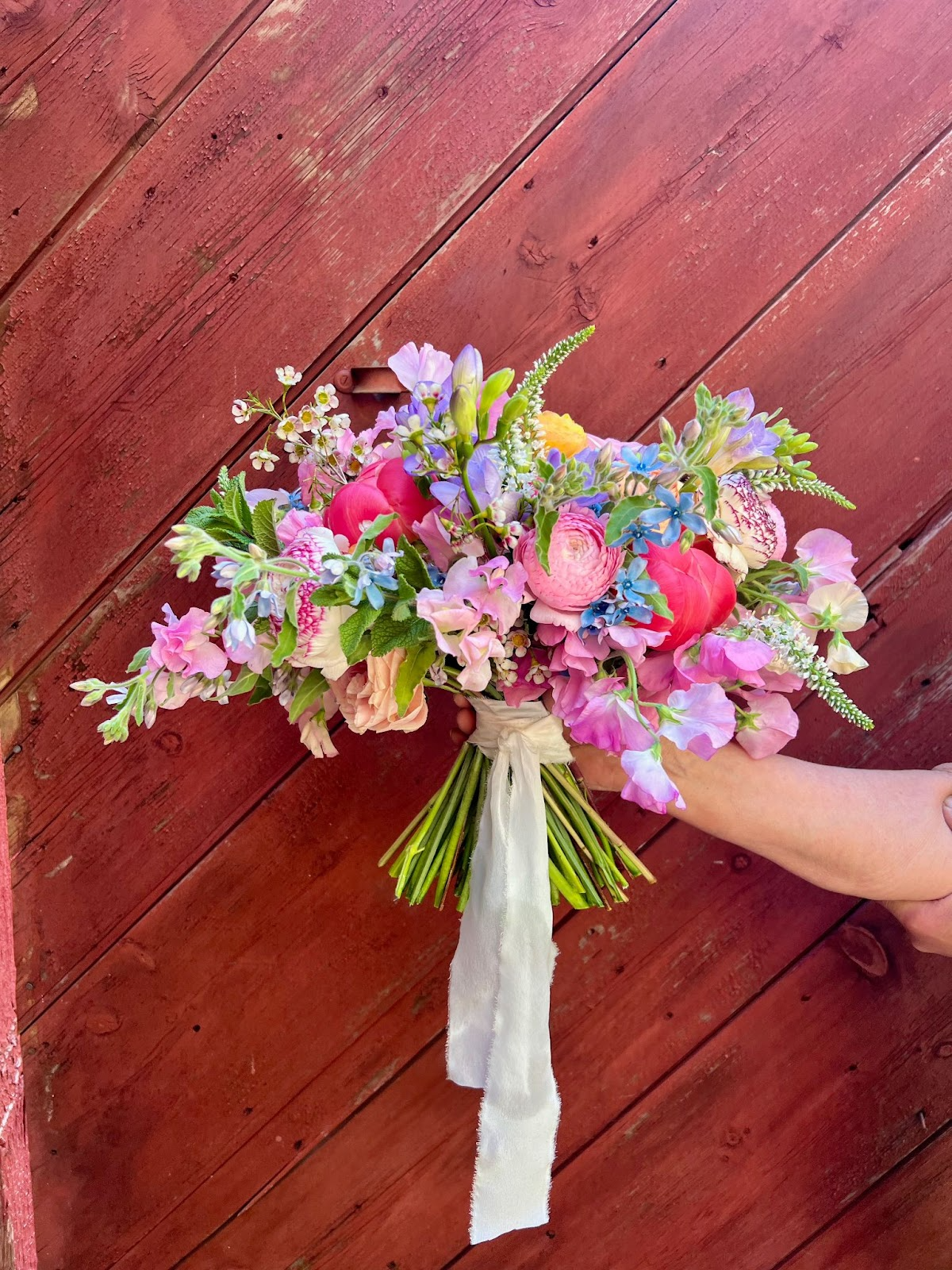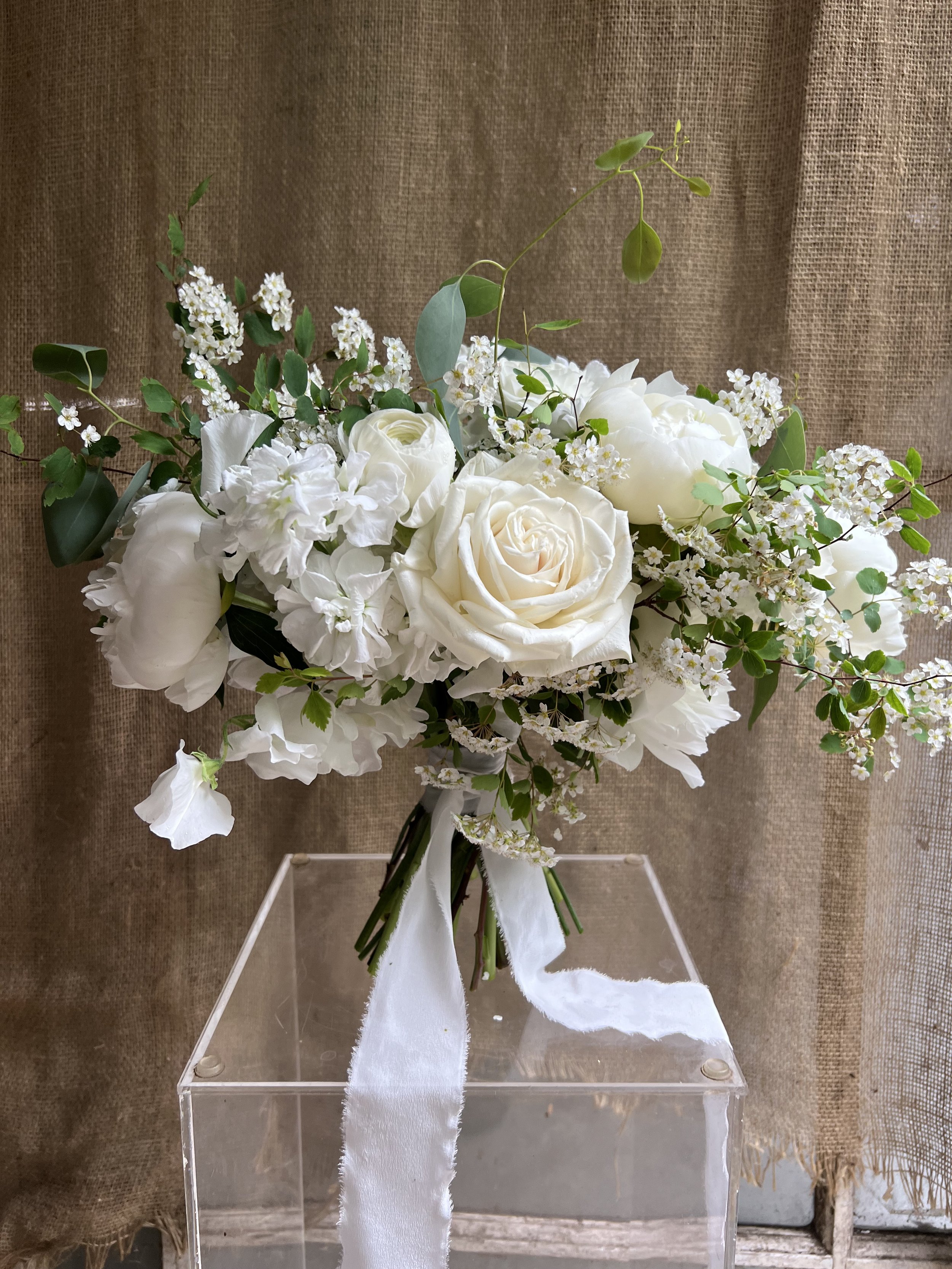Designing with Flowers: Spiral Bouquets
The spiral bouquet is a favorite of ours here at Sweet Earth Co. Not only are they visually stunning, they’re great for crafting a bouquet with confidence, as they are efficient to make and the stems hold up well.
The history of handheld bouquets
Handheld bouquets date back to the 14th century, when upper class women would carry them to mask unpleasant scents in the streets.
Meanwhile, hand-tied bouquets were created with the idea that the flowers could easily be held, carried, or placed into a vase — all with the bouquet keeping its form.
Originating in Europe, spiral bouquets are one form of a hand-tied bouquet that specifically refers to the method of placing the stems. In a spiral bouquet, the stems are continually placed adjacent to one another, angled around a central axis, as opposed to parallel placement or criss-crossed or weaved placement. The physics of the spiral technique allows the stems to evenly support one another’s weight. When done correctly, the bouquet will stand by itself (without support) when placed on a table. In addition to being a practical and portable arrangement, spiral bouquets are a beautiful work of living art.
Benefits of a spiral bouquet
Spiral bouquets are perfect for building confidence with the art of floral arrangement. They’re quick and efficient to make when you follow the spiral placement method. The layering of stems helps to prevent against breaking, so you will lose less stems.
The spiral method gives you more control over your design — and your budget — as it helps prevents overstuffing as well.
The spiral method lends itself well to many styles — airy, garden-inspired, modern, or cascading.
Tips for creating your hand-tied spiral bouquet
Start by determining your form — whether lush and garden-inspired, traditional rounded mound, airy and minimalist, bold and modern, cascading, or your own creative expression. The spiral technique can be used to create various forms.
The shape of your flowers also lend to the form — large, open-faced focal flowers to draw the eye, sturdy spike flowers to accentuate lines, whimsical flowers to add movement, and textured foliage; there are a multitude of options and floral combinations.
Once deciding on the form, choose your color story. Your color palette can help set the tone – vibrant colors, mood colors, pastels or jewel tones. Color combinations can be complementary, analogous or monochromatic. Challenge yourself to think outside of the color box!
Now you’re ready to begin constructing your bouquet, but first be sure to disinfect your tools — you’ll want your snips and floral knife clean and sharp. Prep your stems ahead of time so they’re ready to place into the arrangement.
Have your other tools handy as well. You’ll need:
Floral tape, twine or your binding material of choice
Vase to place the bouquet when done
A mirror to look at the bouquet from different perspectives to spot “holes” or empty spots in the design
If you want to learn more about creating a spiral bouquet, come to our in-person workshop at the Sweet Earth Co. studio, happening July 13th, 2023.
Learn more about the workshop here.




